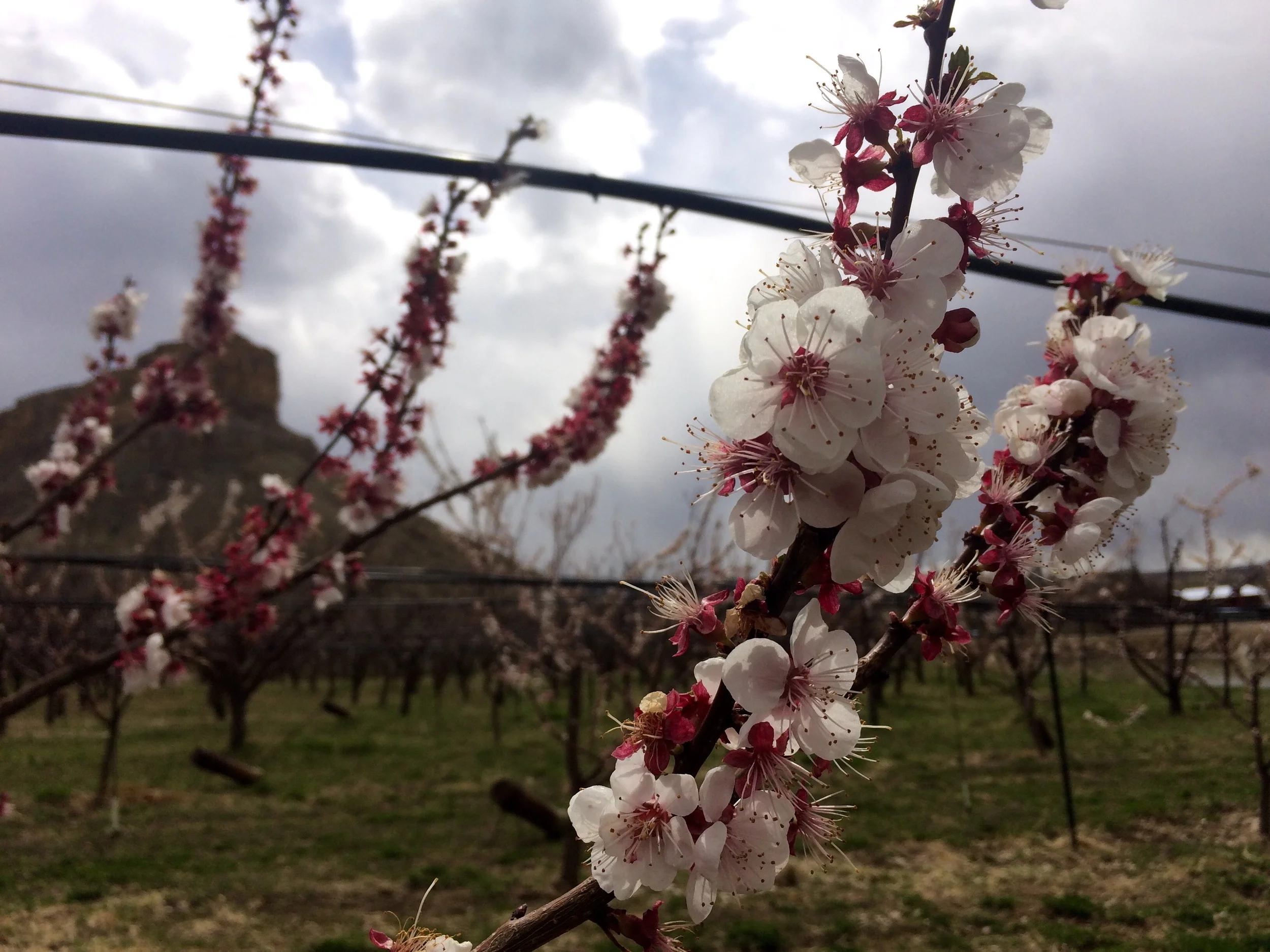Jean Francois, Gus and Adolfo harvest rocks, one of just a few spring farm tasks that can still be done in the rain. Working with fruit trees while they're wet encourages the spread of disease.
Experienced and hard-working orchard crew members—from Mexico, France and here in the Grand Valley—have been moving through the farm's considerable list of spring projects with momentum. Currently, they are lightening the loads of fruit bud-heavy peach trees by hand-thinning each branch. This process is always a race against the seasonal clock—thinning progress slows down as buds develop into blossoms that are more difficult to remove.
Each year we renew roughly two acres of orchard, removing a block of older, low-production trees in the fall and, in spring, planting new trees in soil that has "rested" for the two previous years. In preparation, we seed the resting fields with beneficial cover crops like clover, alfalfa and vetch, and remove rocks that would obstruct the root system of a growing tree. We repair or install the irrigation system of black plastic tubes and their supporting wire trellis, which deliver water to micro-sprinklers dangling between every other tree. When the canal district turns on the water in a few weeks, irrigation will become a part of daily farm work again.
Thomas Cameron prospects for rocks. We'll replant this field in spring of 2017, and nurture the soil in the meantime.
We hope to see our first harvest from our densely planted two-acre block of sweet cherries on the sloping eastern edge of our farm. Pomologist Ioannis Minas, from the Western Colorado Research Center, recently visited to make pruning recommendations for the young trees. He showed us how to shape the trees to maximize fruit production and flavor by keeping fruiting buds close to the trunk and maintaining a "Christmas Tree" silhouette that allows sunlight to reach the lowest branches. The cherries will round off our pruning for the year after more than three months of stop-and-go progress through the snowy El Niño winter.
Not yet pruned trees in our young sweet cherry orchard, the windiest place on the farm.
Rancho Durazno and orchards all across the Grand Valley are bursting into bloom, with apricots and plums flowering first, followed by peaches and then cherries. As the blossoms develop they become more susceptible to nighttime frost, reaching their most fragile state at full bloom. A few chilly nights have kept Thomas and Gwen up checking temperature and wind speed, but we've so far benefitted from warmer than forecasted weather. We'll remain at rapt attention to the tempestuous spring weather as our biggest crop, peaches, reach full bloom. —Gwen Cameron, Deputy Cameron




